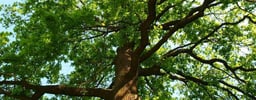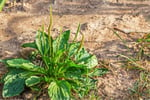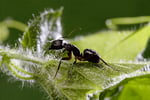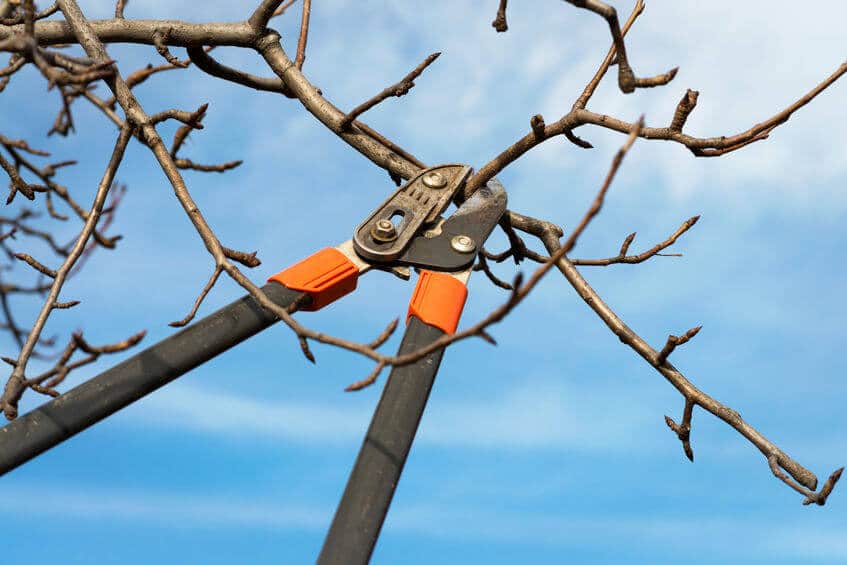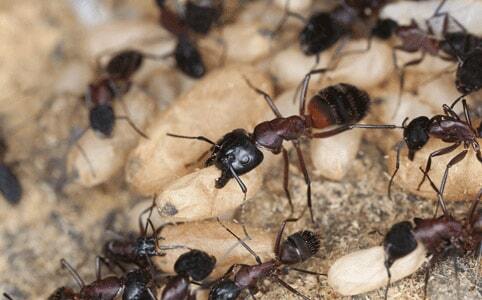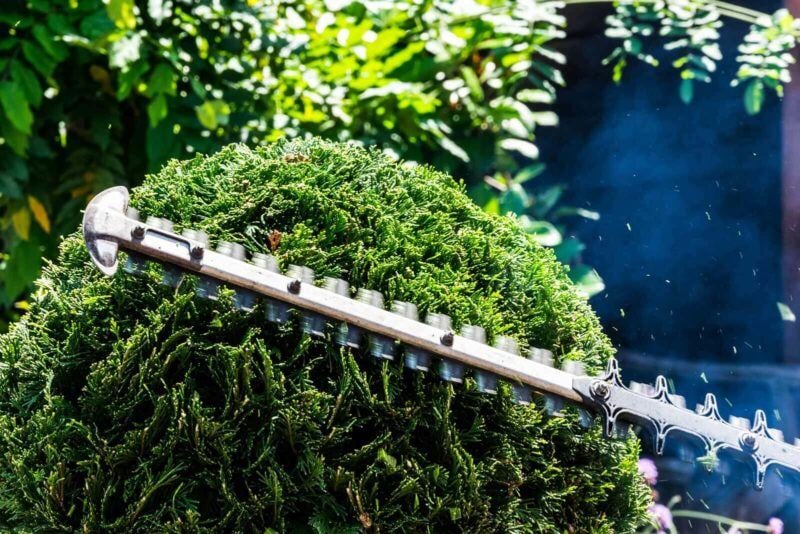Due to the many Spurge varieties, it can be difficult for homeowners and gardeners to identify exactly what type of Spurge they’re dealing with.
Spurge most often grows in warm weather and has a long, central taproot that allows it to survive in drought. It usually grows low to the ground, but can pile up to reach greater heights. When the leaves or stems of a Spurge plant are broken, it exudes a caustic, milky sap known to irritate skin and be poisonous if consumed.
Here are some of the Spurge types we see most frequently in lawns and gardens.
Spotted Spurge (Prostrate Spurge)
Spotted spurge is the most common type of spurge weed. It can frequently be found in lawns as well as between patio pavers and sidewalk cracks. Look for dark green leaves directly across from each other, red stems and small, pink flowers (white/green when not fully grown). It grows low to the ground with stems that branch outward like bicycle wheel spokes, and appears very hairy.
Sometimes, but not always, the leaves of a Spotted Spurge will have a purplish, oval spot on them. The earlier you catch spotted spurge growing, the better as it’s known for being fast-growing. Its milky sap is highly caustic to the skin and poisonous to consume.
Garden Spurge
Like Spotted Spurge, Garden spurge is one of the most common weeds and often grows prostrate between sidewalk cracks and pavers in driveways and patios. Red or purplish stems are helpful identifiers of the plant. Look for fine hairs and its finely toothed leaves that grow directly opposite one another. While they have many similarities, Spotted Spurge leaves tend to be much rounder in shape and smaller as well.
Though the Garden Spurge branches out in spokes, the nodes aren’t known to anchor down, so the plant can be relatively simple to remove by hand when small. Make sure to wear gloves to avoid skin and eye exposure to its sap.
Leafy Spurge
Provided plenty of growing room by grazing cattle, Leafy Spurge is common to yards bordering pastures and rangeland. Upright portions of the plant can climb as high as 3’. Look for leaves that alternate upward, and yellow-green flowers growing at the tips of the branches. As with other varieties, Leafy Spurge is toxic to pets and humans so handle only small plants with care.
Myrtle Spurge (Creeping Spurge)
Myrtle Spurge, commonly referred to as Creeping Spurge, is known to reach heights of 20”, but always starts off low to the ground. Look for long, bluish foliage with pointed leaves that grow in a spiral pattern along the stems. Myrtle Spurge flowers are chartreuse in color and grow in bundles toward the tips of the stems. Like other spurge plants, the milky white sap produced by creeping spurge is poisonous and irritating to the skin.
Petty Spurge
Petty Spurge grows small and upright, reaching about 12” when fully grown. Petty Spurge has light green modified leaves that spiral to the tips of its branches to cradle bunches of extremely small, green flowers.
Nodding Spurge
Nodding spurge is known to grow up to 30” tall, but will usually average around 18”. Similar to Spotted Surge, its leaves grow directly across from each other on red stems, can have purple spots, and sport hairs. The biggest difference between Nodding Spurge and Spotted Spurge is the way the foliage grows. Spotted Spurge will grow prostate, while Nodding Spurge grows upward.


.png?width=1142&height=1350&name=Holiday%20Decor%202025%20LP%20-%20548x648%20%20(1).png)


